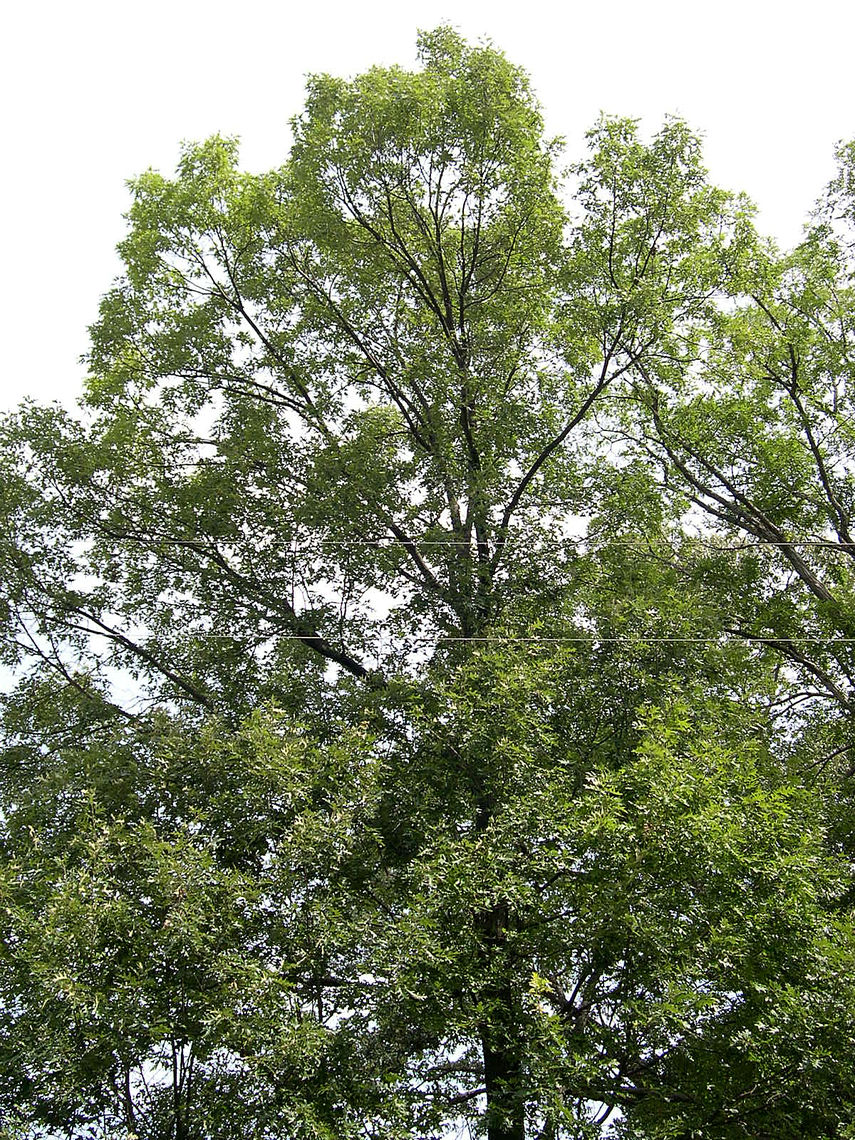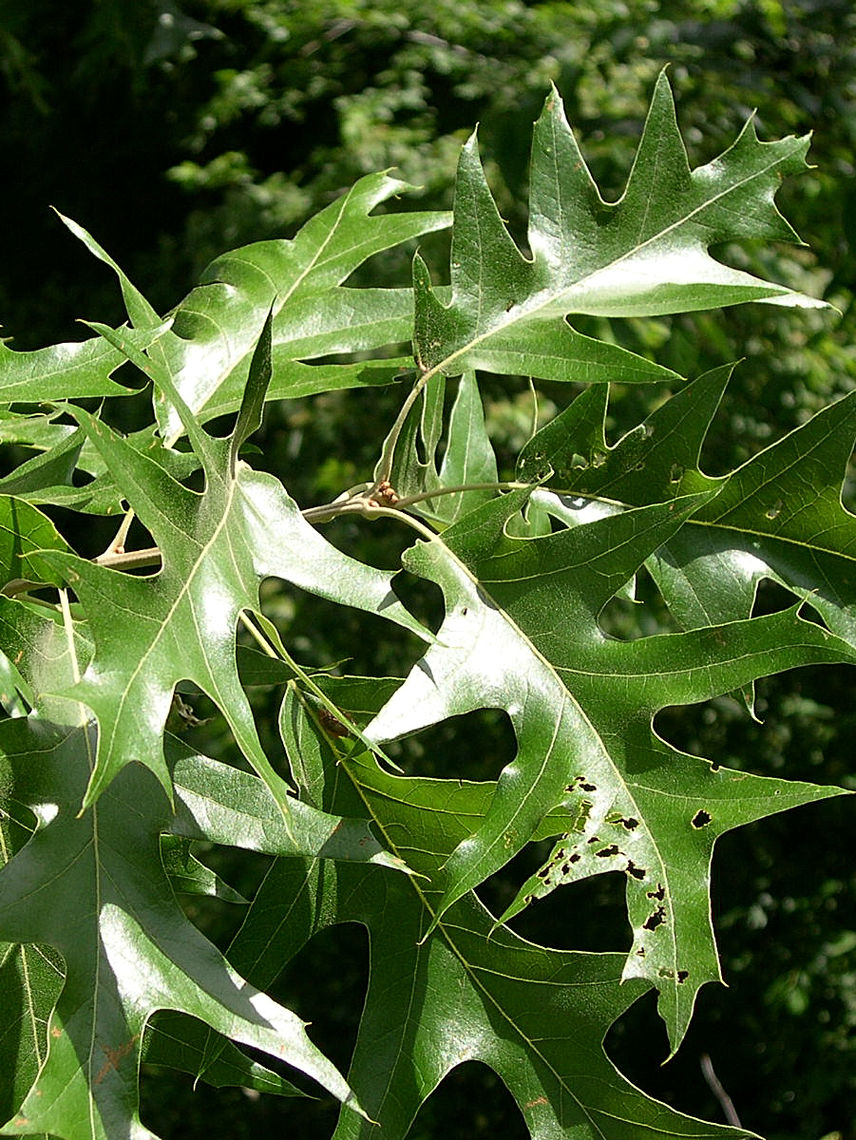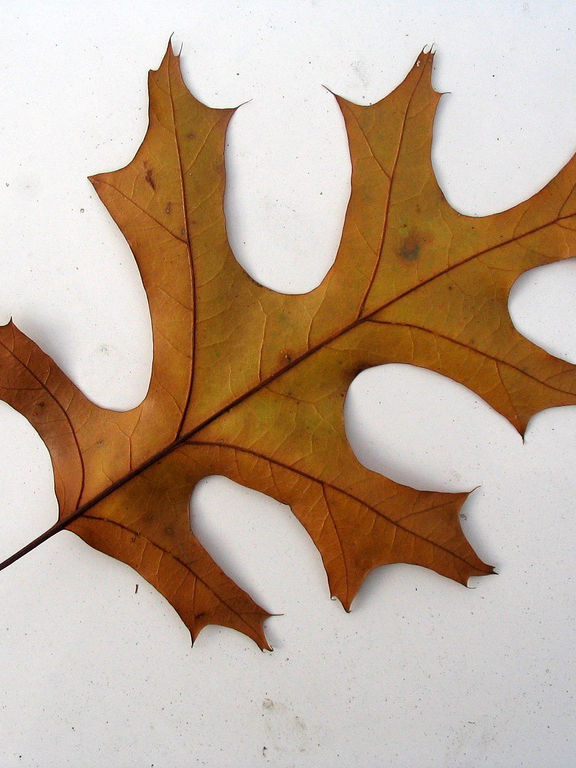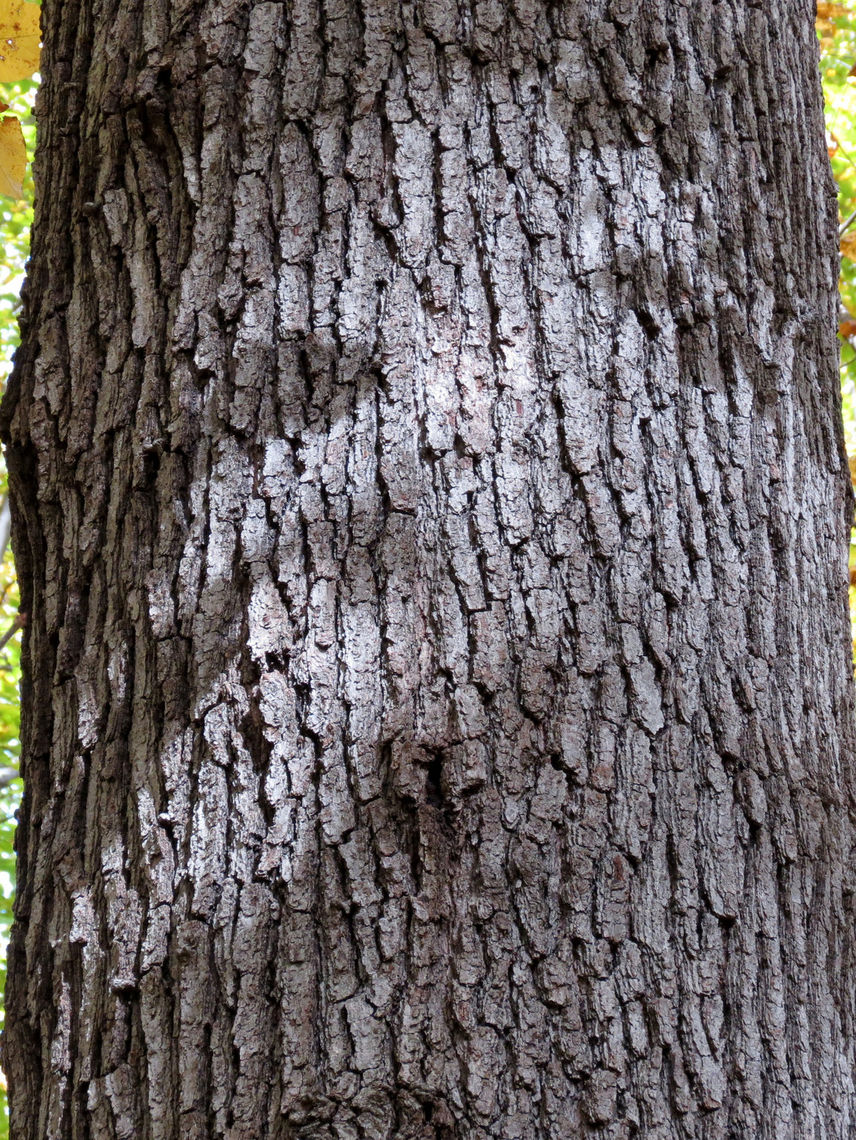Black Oak (Quercus velutina)
The black oak is a medium-sized shade tree. Its large, leathery leaves have deep margins and 7-9 pointed lobes. Its acorns are small, oval shaped, and topped with a fringed cap that covers half the acorn. The black oak is similar in appearance to the red oak, though its defining factor is that its terminal buds are covered in gray fuzz, opposed to the hairless red oak buds. This tree attracts birds and mammals.
Family: Fagaceae (Beech)
Characteristics: The 10 inch long, leathery, dark green leaves have deep margins, and 7-9 pointed lobes. In the fall, leaves turn yellow to a yellow-brown. This tree produces insignificant yellow-green flowers that appear as catkins. Acorns are ½ to ¾ an inch long, oval shaped, and topped with fringed caps that cover ½ of the acorn. Bark is almost black and ridged. This tree has a round and spreading crown. It grows 50-60 feet high.
Foliage: Deciduous (leaves lost seasonally)
Geographic Origin: Eastern U. S., southeastern Canada (native)
Cultivation Notes: Requires low maintenance. Does best in full sun. Prefers acidic, medium moist, and well-drained soils, though it can also tolerate dry soils. This tree may be difficult to transplant, due to its deep taproot.
Number on Campus: 2
Sources: Dirr, Morton Arboretum, Missouri Botanical Garden




